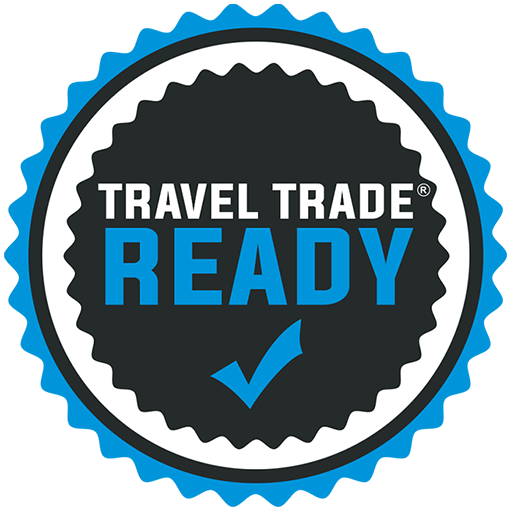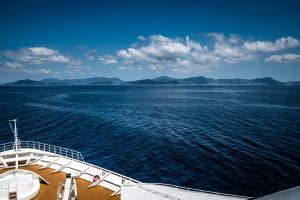Understanding the Power of Influencer Marketing in Tourism
In the digital age, where traditional marketing channels often get overshadowed by newer, more interactive platforms, influencer marketing in tourism has emerged as a key transformative strategy. This approach is not just about selling a destination but about storytelling, creating relatable and engaging narratives that resonate with potential travellers. Let’s delve into how influencer marketing can elevate the visibility and appeal of your tourism brand.
Defining Influencer Marketing in Tourism
An influencer in the tourism industry is someone who has the ability to affect the travel decisions of others because of their authority, knowledge, position, or relationship with their audience. These individuals have specialised knowledge about travel destinations, experiences, and lifestyles and communicate this through various social media platforms. They range from bloggers and vloggers to Instagram celebrities and TikTok stars, each sharing their unique travel experiences and insights.
The Role of Influencers in Travel and Tourism
By harnessing substantial and engaged followings, influencer marketing in tourism is more than just outsourced content creation – influencers are trusted voices that can authenticate your destination’s experiences. They bring destinations to life through their eyes, providing a personal touch that traditional advertising cannot match. This connection is especially vital in marketing in the travel and tourism industry, where experiences are the product.
The Importance of Influencer Marketing in Hospitality
In the hospitality industry, influencer marketing in tourism is particularly vital as it bridges the gap between destinations and potential visitors in a relatable and experiential manner. Influencers can offer a personal testimony to the quality of services and the exclusivity of accommodations, creating a sense of aspiration and urgency. Their recommendations come as peer advice rather than corporate advertising, lending authenticity that today’s savvy travellers increasingly demand.
Why Trust Influencers?
Trust is a commodity in short supply nowadays, particularly in digital realms. However, influencers have managed to build communities around authentic interactions and shared interests. When an influencer shares their travel experiences, their audience sees a candid review from a voice they trust, not just another advertisement. This trust is crucial in influencer marketing in travel and tourism, translating into higher engagement rates and more effective conversions than standard ads.
Best Practices for Collaborating with Influencers in Tourism
Engaging with influencers effectively requires a thoughtful strategy that aligns with your brand’s values and marketing goals. Here’s a deeper look into influencer marketing in tourism, and how you should be collaborating with influencers to maximise the impact of your tourism marketing efforts.
Selecting the Ideal Influencers
Choosing the right influencer is the cornerstone of a successful marketing campaign. Here are additional considerations to guide your selection process:
- Niche Expertise: Focus on influencers who specialise in niches that complement your tourism niche. For example, eco-tourism brands might look for influencers who focus on sustainability and nature, ensuring the message resonates with the audience’s values and interests.
- Audience Engagement: Look beyond the numbers; examine the quality of interactions that influencers have with their followers. An influencer with a smaller but highly engaged audience can often offer more value than one with a larger passive follower base.
- Content Quality: Evaluate the consistency and quality of the content the influencer produces. High-quality visuals, well-written articles, or engaging videos are crucial as they reflect on your brand.
Structuring Collaborations
Once the right influencers are identified, structuring the collaboration effectively is the next step on the road to success. To take that step, you’ll need the following:
- Clear Communication: Define your goals and expectations from the outset. Provide influencers with a clear brief that includes key messages, campaign timelines, and any mandatory guidelines they need to follow while allowing room for creativity.
- Creative Freedom: While it’s important to communicate your needs, giving influencers the freedom to create content that fits their style and voice is crucial. This authenticity is what gives influencer content its power.
- Long-Term Partnerships: Consider building long-term relationships rather than one-off campaigns. Influencers who repeatedly endorse your brand can help build sustained trust and credibility among their audience.
Crafting Authentic Experiences
Delving deeper into creating genuine experiences for influencer marketing in tourism, here are some more options to consider:
- Immersive Experiences: Invite influencers to experience the destination or service first-hand. Whether it’s a guided tour, a special event, or a stay at a resort, experiencing it in person allows influencers to create more authentic and compelling content.
- Behind-the-Scenes Access: Provide influencers with behind-the-scenes glimpses that regular tourists might not see. This exclusive content can intrigue their audience and add an element of uniqueness to their narratives.
- Story-Driven Content: Encourage influencers to tell a story through their posts. Whether it’s discovering a hidden beach or participating in a local festival, stories create emotional connections and are more likely to be remembered and shared.
Strategic Content Creation in Influencer Marketing
Creating engaging and effective content with influencers is not just about execution; it’s about strategic planning and aligning that content with both the brand’s and the influencer’s audience. Here’s how you can develop a robust content creation plan that enhances your influencer marketing in tourism efforts.
Aligning Brand and Influencer Goals
- Shared Objectives: Begin by ensuring that both the influencer and your brand have aligned objectives. This alignment helps create a cohesive narrative across all content, which reinforces the campaign’s key messages and goals.
- Brand Identity Integration: Integrate your brand’s identity subtly into the influencer’s content. This might involve the influencer using specific brand colours, logos, or other brand elements in their posts to ensure the content feels both organic and on-brand.
- Content Co-Creation: Work collaboratively with influencers in the content creation process. This can involve brainstorming sessions or workshops that help both parties understand and leverage each other’s strengths, leading to more authentic and impactful content.
Developing a Content Calendar
- Timing and Frequency: Develop a content calendar that outlines when each piece of content will be released. Timing can be crucial, especially if it coincides with special events, seasons, or promotional periods that are relevant to the tourism industry.
- Cross-Promotion Schedule: Plan for cross-promotion across both the brand’s and the influencer’s platforms. This can help maximise reach and ensure consistent messaging across various channels.
Diversifying Content Formats
Expanding upon the strategy to diversify content formats, here’s how different formats can be used effectively:
- Blog Posts: Deep-dive articles that provide in-depth information about the destination or experience, complete with beautiful imagery and personal anecdotes from the influencer, can be highly effective. These posts can also be optimised for SEO, targeting specific keywords related to tourism and travel.
- Videos: Videos, especially those that are immersive and visually engaging, can capture the essence of a destination uniquely and vividly. Consider formats like ‘day-in-the-life’ vlogs, guided tours, or even live Q&A sessions where the influencer can interact directly with their audience.
- Instagram Stories and Reels: These formats are ideal for sharing more spontaneous and immediate experiences. They are also perfect for teasers leading up to a full blog post or video, behind-the-scenes looks, or quick travel tips.
- Interviews: Featuring local experts or behind-the-scenes interviews with the influencer can add credibility and a fresh perspective to the content. This format can be particularly effective in video or podcast form.
Measuring the Impact of Influencer Campaigns
It’s not just about the content creation; measuring the effectiveness of your influencer marketing in tourism campaigns is crucial. Define clear metrics for success before launching the campaign. These could include engagement rates, traffic to your website, or direct bookings. Utilising tools like Google Analytics and social media analytics, you can track these metrics to see how well the influencer’s content is performing.
To ensure the effectiveness of influencer collaborations, it’s crucial to monitor and measure the impact:
- Set Specific Metrics: Before the campaign begins, agree on what success looks like. Whether it’s increasing website traffic, boosting social media engagement, or direct bookings, having clear metrics helps gauge the success of the campaign.
- Use Tracking Tools: Utilise tracking tools like UTM codes, affiliate links, or promo codes to monitor how influencer engagements translate into actionable results.
- Feedback and Adjustments: After the campaign, gather feedback from both the influencers and their audience. This insight can help refine future campaigns, making them more effective.
Influencer Marketing in Action: Real-World Examples
To grasp the impact of influencer marketing in travel and tourism, consider a campaign where a popular travel vlogger explores the hidden gems of a lesser-known destination. Their series of posts and videos showcase local attractions, cuisine, and culture, wrapped in a narrative that’s both engaging and personal. Such content not only highlights the destination but also inspires followers to consider visiting, directly influencing travel behaviour and preferences.
Another good example is when tourism boards collaborate with influencers to create themed travel diaries, such as “luxury weekends” or “budget backpacking across Europe.” These campaigns effectively illustrate the versatility of influencer marketing tourism, showcasing how different types of travel can appeal to various audience segments.
Spotlight on a Major Player – Murad Osmann
While naming the “biggest” travel influencer can vary based on metrics such as follower count, engagement rate, or niche influence, figures like Murad Osmann are often highlighted. Famous for the #FollowMeTo series, Osmann’s compelling photography featuring his wife leading him by hand to various stunning locations around the world has captivated millions. This level of engagement showcases the profound impact a well-followed influencer can have in moulding travel trends and preferences.
Ready to Level-Up Your Travel Marketing?
As we wrap up our exploration of influencer marketing in tourism, it’s clear that the strategic use of influencers is more than just a marketing tactic; it’s a robust approach to storytelling and customer engagement. By leveraging the authentic experiences and trusted voices of influencers, tourism organisations can enhance their visibility and appeal effectively.
Whether you’re looking to boost destination attraction or promote unique travel experiences, incorporating a nuanced influencer marketing tourism strategy can significantly amplify your reach and resonance in the competitive tourism market.


